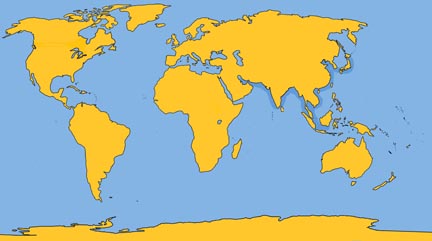Family: Phocoenidae
Genus: Neophocaena
Species: N. phocaenoides (G. Cuvier, 1829)
White and black variations have been observed among finless porpoises. Although these may represent separate subspecies, insufficient evidence has been gathered to confirm or deny this. The finless porpoise is the only true porpoise with no dorsal fin, although a low ridge runs down the back. This animal lives in both fresh and salt water and will ascend considerable distances up rivers. It possesses many of the same traits as the Irrawaddy dolphin, with its riverine habits, flexible neck, and paddle-shaped flippers. It very much resembles a small beluga.
Physical Description: The head is rounded in contour with the slightly stocky body. A prominently rounded dorsal ridge stretches from the mid-back region to the tailstock. Many are reported to have pink eyes.
Color: They are pale gray with blue tinge on the back and sides, and off-white on the ventral regions, particularly the head and anterior regions of the rump.
Fins and Flukes: There is no dorsal fin. The flippers are long, broad, and pointed at the tips. The long, thin flukes are rounded at the tips with a definite median notch.
Length and Weight: They reach a length of 4.5 to 6 ft (1.4 to 1.8 m) and about 100 lb (45 kg).
Teeth: 15 to 19 short, compressed, spade-shaped teeth are found on each side of the upper and lower jaws.
Feeding: Small fish, prawns, cuttlefish, and squid.
Breathing and Diving: Prior to a dive, which lasts 45 to 70 seconds, they breathe 3 to 4 times in quick succession every 7 to 13 seconds.
Mating and Breeding: It has been suggested that calves are born in August at 15 to 20 lb (7 to 9 kg).
Herding: Up to 50 have been observed, subdivided into groups of about 5.
Distribution: They inhabit the warm coastal waters and certain rivers of Pakistan east to Korea, Japan, Borneo, and Java.
Migration: No information available.
Natural History Notes: Ordinarily these animals swim just below the surface with rigid, erratic movements. Mothers have been observed swimming with calves on their backs; the calf coming all the way out of the water on the mother’s back when she rises to the surface. The calf must use a rough skin patch on the mother’s dorsal region to secure itself for a free ride.









